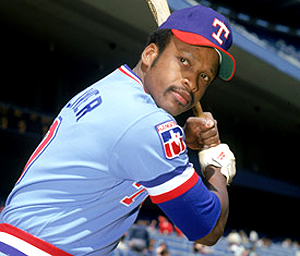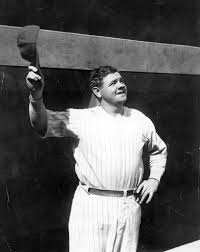By David Mullen
After an “irregular” season like 2020, baseball is still a numbers game. This year, the number is 19, as in COVID-19.
But even with the pandemic, baseball fans remain obsessed with numbers. Chances are fans can recite the top five home run hitters of all time and their statistics, but not be able to remember their own license number or computer passcode.
In baseball, the importance of numbers remains constant. A uniform number is often synonymous with the player. Since the inception of the number on a baseball uniform jersey, introduced by the New York Yankees and Cleveland Indians in 1929, players are linked to their numbers. But it didn’t begin that way. The reason Babe Ruth wore number 3 is that he batted third in the Yankees lineup, Lou Gehrig is No. 4 because he batted fourth and so on.

Photo courtesy of Pinterest
The 2020 season had many odd twists and because of expanded rosters, one tradition came to an end. There are no new uniform numbers left.
When No. 89, Yankee rookie righthander Miguel Yajure took the mound on August 31, he not only made his major league debut but took the last unused uniform number in MLB history.
Earlier in the month, St. Louis Cardinals reliever Génesis Cabrera wore No. 92 for the first time in MLB history when he took the mound on August 15, and reliever Jesus Cruz wore No. 86 on August 18. Miami Marlin lefty Brandon Leibrandt also wears No. 86, but he made his debut on August 23. So, in essence, Cruz did a number on Leibrandt.
Baseball has lost six Hall of Famers in 2020. Al Kaline, Tom Seaver, Lou Brock, Bob Gibson, Whitey Ford and Joe Morgan have all passed away. It is safe to say that Seaver, No. 41, and Gibson, No. 45, are forever known by their jersey numbers.
In football, No. 12 has been worn by Terry Bradshaw, Tom Brady, John Brodie, Bob Griese, Jim Kelly, Andrew Luck, Joe Namath, Aaron Rodgers, Ken Stabler and Dallas Cowboy Roger Staubach. All were or are quarterbacks. In baseball, it is a seldom used number and primarily linked to Hall of Famer Roberto Alomar.
Number 32 has been worn by football greats Jim Brown, O.J. Simpson, Franco Harris and Marcus Allen, meaning there is not a clear-cut number choice. In baseball, No. 32 is synonymous with Sandy Koufax, although fans of another lefty, Steve Carlton, might disagree.
In addition to Ruth being No. 3, No. 34 was Nolan Ryan, No. 24 was Willie Mays and No. 21 was Roberto Clemente. Jackie Robinson was No. 42, which has been retired by every team. There is little debate over those players owning those uniform numbers.
With all due respect to others that wore the number, No. 29 is “Sir Rodney” Rod Carew and No. 27 is the “Dominican Dandy” Hall of Famer Juan Marichal. The cooler nickname breaks any tie. Number 13 was lucky or unlucky, depending upon your point-of view on performance enhancing drugs, for former Ranger shortstop Alex Rodriquez.

Photo courtesy of the Baseball Hall of Fame
Number 9 is attributed to the “Splendid Splinter” Ted Williams, who was anything but a klutz at the plate. But how can one forget former Oakland A’s player Mickey Klutts, a player with a very unfortunate surname for an infielder, who also wore No. 9.
Regionality plays a role. In most places, No. 44 is Hank Aaron, unless you are from the West Coast. Willie McCovey wore that number with esteem. Metroplex fans are torn. Number 7 is Mickey Mantle to everyone, and he lived in Dallas after retirement, but Rangers fans are forever endeared to No. 7 Ivan “Pudge” Rodriquez.
Ownership is not without controversy. Number 5 was won by George Brett, Joe DiMaggio, Johnny Bench, Albert Pujols, Brooks Robinson and Jeff Bagwell. Number 8 was won by Cal Ripken, Jr., Carl Yastrzemski, Yogi Berra, Willie Stargell and the aforementioned Morgan. Pick any player among those groups and in is hard to be called wrong. One of the many baseball oddities is that knuckleballers like Hoyt Wilhelm, Charlie Hough, Tim Wakefield and Tom Candiotti all wore No. 49. Only Hall of Fame knuckler Phil Niekro, who wore No. 35, tossed in a curveball, so to speak.
Some other players are just fortunate to have worn a number that no other or very few unaccomplished players wore. Al Oliver put No. 0 on his back when traded to the Texas Rangers, a number a hitter should despise. But Oliver finished his career with a lifetime .303 average and 2,743 hits. Curt Shilling wore No. 38 and Dennis Eckersley wore No. 43. There is no competition.
Highland Park’s Clayton Kershaw may eventually lay claim to No.22, but for now it belongs to Hall of Famer pitcher and famous men’s underwear pitchman Jim Palmer.
So, despite potential negative numbers that the 2020 season was played before zero fans unless one counts cardboard cutouts and a team with one of the highest payroll numbers (the Los Angeles Dodgers) is playing the team with perennially the lowest payroll number (the Tampa Bay Rays) for the World Series title, numbers in baseball reign supreme.
Hopefully, next season, 19 won’t stand for COVID in baseball, but for who wore the number better. Was it Bob Feller, Tony Gwynn or Robin Yount?
